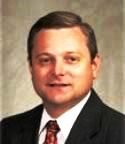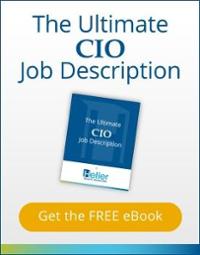Adam Gorski recalls how he prepared for interviews and won his dream CIO job at Alent plc. Excellent CIO job search advice.
Our interview with Adam Gorski, who has served as Global Vice President of Information Technology at Alent plc since 2007. (Editor’s note: At Alent, Global Vice President of Information Technology is equivalent to the CIO title).
Were you actively looking for a new CIO position in 2007?
Not actively. Back then I was always taking the temperature of the job market using LinkedIn and sites like ExecuNet, Monster, and 6figurejobs, and I tried to keep my résumé up to date. One day I received a phone call from the Director of HR at Alent (formerly Cookson Electronics) and he asked me if I was interested to discuss this role. He had found my information on Monster and that is how it started.
What was the company looking for in a new IT leader?
They wanted someone who could advise senior management on what IT should be doing, standardize systems, come up with the options, and then manage the projects. They were also interested in an IT leader with large, global company experience. Earlier in my career, I had worked at Stanley Works (now Stanley Black & Decker) for ten years, which was a $4 billion company at the time. They also desired a lot of operational experience as well as the ability and skills to help improve the business.
What were you looking for in your next job?
I was seeking a CIO level position with a global, public company with at least $1B in revenue, and to be part of an experienced professional leadership team determined to grow the business. Most of my career experience is in manufacturing, so in addition, I was targeting this sector. I really wanted the chance to use my experience running operations and new product development to help grow revenues and profits, and not just run IT. Lastly, I was hoping I could find a company with all of these features as well as a family oriented culture. I had a young daughter at the time and I did not want to be working a lot of nights and weekends.
| “I found people who worked there, I reached out to them and invited them to have lunch – people I did not know at all. In retrospect, that was a good move.” |
Do you remember how you prepared for your interviews?
Yes. I learned all that I possibly could about the company. I started by actually reading the annual report and was surprised by how helpful that was. I found people who worked there, I reached out to them and invited them to have lunch – people I did not know at all. In retrospect, that was a good move - very eye opening about the culture at the firm and how people did their work.
I also contacted the former CEO of my last employer and met him for lunch, which was another really good move. He is a smart executive with a lot of experience in manufacturing, so I asked him what he thought about this company and their market space, the job opportunity, and how to interview for it. He gave me some invaluable perspective and advice.
Then before my interviews, I developed two lists of questions. The first list contained the questions they might ask me, and I included the answers I had thought up. The second list had the questions I wanted to ask about the company, such as:
- What is the leadership style of other executive committee members?
- What are the biggest issues facing the company?
- What new products are in the pipeline?
- What are the top challenges for each interviewer?
- Priorities for IT - what would they want me to get done first?
Who would you report to in the organization?
Our CEO.
How did you prepare to start your new role?
About ten days before my first day I contacted all my new executive peers and either spoke with them on the phone or left a message. I had already sent separate thank-you notes after the interviews, but now that I was coming on board, this was to let them know that I was eager to start working with them. It really helped because when I walked in on my first day, it felt like we were already working together.
Are there other steps you took to learn the business and build relationships across the enterprise?
I visited all the regions, all the major locations to introduce myself in person. I organized a live global IT meeting of all my direct reports and key leaders in Europe where I shared everything I could on what I had discussed with our CEO.
I asked everyone on my senior team what they would like to do in the future, where they wanted to be professionally. Then I put together a profile of what it would take to get each person into the position they desired – what sort of training and coaching would be required to make that person a success.
What organizational changes did you implement?
I immediately formed an IT executive committee made up of the CEO, divisional presidents, the VP of Operations, our VP of Finance, senior IT Director, and recently one representative from the Board of Directors--about eight people in total. We meet every 3 months and review what we are currently working on in IT, and what work is coming up in the near future. The most important function of this IT executive committee and the meetings is that we make the decisions about whether or not to go forward with each major investment in technology.
Over time, I built a hybrid IT organization. At any location, some people report in at the global level, some regional. It is a total matrix. It is not about who reports to whom. Rather, it is all about getting the job done.
What did you have to deal with from a technology perspective at first?
Nothing was on fire, but IT was sort of “do as you prefer,” with no sense of urgency. There was no strategic plan and no IT roadmap in place. The majority of the tasks in IT were getting done manually and it was quite inefficient. The existing systems were mostly standalone. There were many ERPs running, no CRM and no BI. There was no automation in place for order entry and analysis, and the global network was fragmented and expensive. So, the first order of business was to architect and implement our first-ever strategic IT roadmap.
Looking back seven years, was there any part of the job transition process you could have done differently or better?
If I were to do it again, I would probably invest more up front time building the relationships, not only with the internal people but with key suppliers and vendors.
I would also work more like an internal consultant, analyst or business strategist. Rather than wait for the business to present their strategy to me, I would find out what needs to be done and inform the business about it.
Something that I do now, and that I find helpful for making major decisions, is to take my IT hat off and put a business owner’s hat on. I ask myself, “If I owned this company, what would I do, and what is the absolute best way to do it?” When I have those answers, only then do I put my IT hat back on. The people and processes have to come first before I come up with the system.
About Alent plc
Alent plc is a leading supplier of advanced surface treatment, plating chemicals, and assembly materials to the automotive and electronics markets. A $1.1 billion (US$) company based in Woking, Surrey, England, it’s two major divisions are headquartered in Connecticut and New Jersey. Alent was formerly a part of Cookson Group plc., a $4.5B company. Alent is now listed on the London Stock Exchange and is a constituent of the FTSE250.




Add a Comment